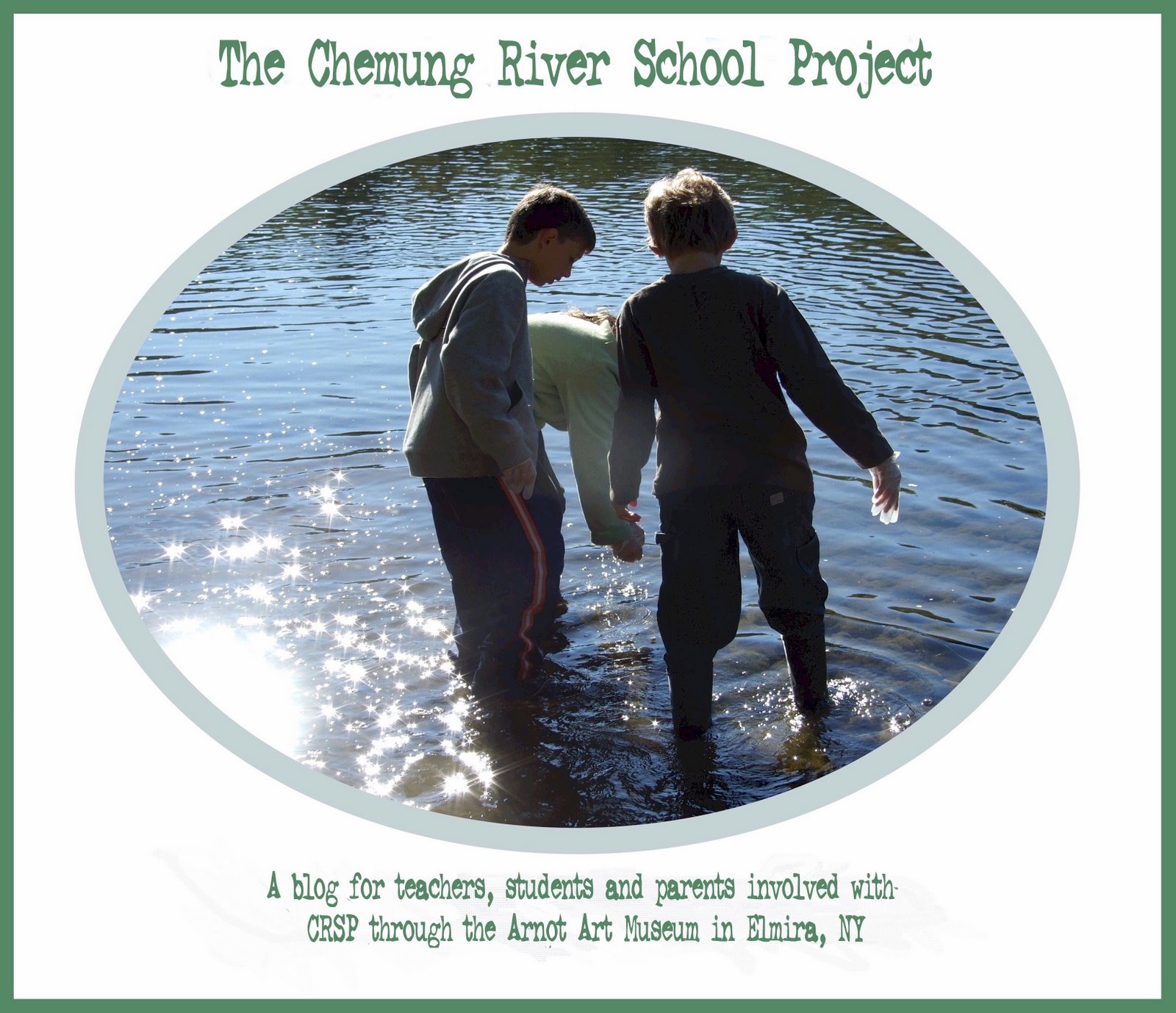During Janna's program, students learned that the Hudson River School artists were a group of American painters who lived in the mid-19th century. They painted romantic landscapes depicting the scenery of the Catskill Mountains, the Adirondack Mountains of New York State and the White Mountains of New Hampshire. In their own way, these painters were activists and presented the land in a way that moved people to want to preserve it. Thus, they were very instrumental in the formation of our first national parks.

Autumn in the Catskills, Thomas Cole, 1827, Oil on panel
Using maps and photographs, Janna also introduced students to famous rivers of the world including the Nile, Amazon, Yangtze, Ganges, Danube, Seine, Thames, Mississippi, Colorado, Hudson, Susquehanna and Chemung. In her discussion, she included the uses of rivers and environmental concerns. Students engaged in a group exercise with colored pencil drawings to show how the landscape of the river may have changed from the mid-19th Century to the present. Her objectives included:
•To explain how artists can effect societal and environmental change.
•To explore the importance of artists in society.
•To examine processes used by artists.
•To inspire spontaneity, creativity and confidence in students.
•To examine a wide variety of artistic expressions.
•To illustrate how artists can create awareness of the environment by studying artists of the past.
•To explain the importance of the Hudson River School artists in American history
•To explore reasons Hudson River School artists painted landscapes.
•To compare and contrast contemporary artists with Hudson River School artists.
While Janna did her presentation, a second class was busy in the Picture Gallery at the museum for a tour and introduction to the permanent collection. In the photograph below, Rick Pirozzolo greets the students and tells them true stories about the origins of the museum, giving students some valuable insights into their regional heritage. The picture gallery is special as it has been preserved from the days when the Arnot Art Museum was the residence of Matthias Arnot, founder of the museum. All the original furniture and sculptures remain and the landscapes, interiors, portraits and still lifes are still hung in salon style, just as Matthias Arnot preferred.

Students were given various activities, including a "scavenger hunt" which encouraged them to look closer at the paintings as they were introduced to works by European artists - some of whom lived several centuries ago. Below is just a sampling of the museum's permanent collection to which the students were introduced.

The Flemish Fair, Jan Brueghel, the Elder, 1613, Oil on copper
Painted 400 years ago, students can get an idea of the architecture, clothing, and customs of the period in Northern Europe. Jan Brueghel, the Elder, was the son of Pieter Breughel, a very famous painter. In this painting, he took a “bird’s-eye” view. A Flemish Fair is set on the banks of a canal. In it you can see the village church and another village off in deep space. How does Brueghel create this sense of space?

Apple Gatherers, Jean-Francois Millet, 1851-1853, Oil on canvas
Millet was a painter who was interested in the lives of common folk. In "Apple Gatherers," he depicts peasants picking fruit at night in this unusual scene. Do you remember what a peasant is?

The Marabou, Jean-Léon Gérôme, 1889, Oil on canvas
Mothers pose with their sons in the photographs above.

Students scramble to find all the paintings during the scavenger hunt.
 Students discover that looking requires time and close observation.
Students discover that looking requires time and close observation. Bob Bartley, 4th grade teacher at Center Street School, discusses a painting with his students during the scavenger hunt in the Picture Gallery.
Bob Bartley, 4th grade teacher at Center Street School, discusses a painting with his students during the scavenger hunt in the Picture Gallery. Chemung Elementary School 4th grade teacher, Jeanne Gridley, artist/educator, Janna Keser and Director of Tours, Wendy Taylor, look on.
Chemung Elementary School 4th grade teacher, Jeanne Gridley, artist/educator, Janna Keser and Director of Tours, Wendy Taylor, look on.
Another mother and son.

Even grandmothers accompany their grandchildren on the tours.
http://www.artandremembrance.com/
•original
•reproduction
•artist
•collector
•landscape
•portrait
•sculpture
•bust
•embroidery
•textile
•Hudson River School
•John Arnot
•Matthias Arnot
•salon
•World War II






